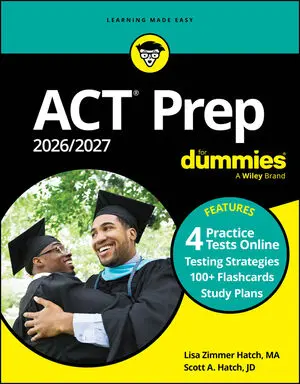No matter your prompt’s topic, the ACT graders want to see a specific format to your writing. In other words, they don’t want all the ingredients thrown in any old way. By following the organization we outline in the next few sections, you can give the test graders a supersized essay worthy of a supersized score.
 ©gorillaimages/Shutterstock.com
©gorillaimages/Shutterstock.comEssays are organized like hamburgers.
The top bun: Introduction
The top bun includes the funnel of information that leads to your thesis. We show you how to write it in the previous sections. Now you can move on to the essay’s body paragraphs.The three meats: Example paragraphs
Think of your supporting arguments in terms of three different kinds of meat — perhaps two beef patties and some bacon or a chicken club with turkey and bacon. Each meat represents a separate paragraph in your essay, the purpose of which is to add specific examples that help prove the position that you state in your top bun. (Are you getting hungry yet?)Each meaty paragraph needs to include the following elements:
- Three to five sentences
- A solid topic sentence that relates directly to your position (remember, you already wrote your ideas in the top bun — your thesis)
- A variety of reasons, details, and examples that illustrate that specific topic
Uniforms should be required because a variety of clothing choices can be very distracting in the learning environment.
Now you have to write a few sentences that prove that clothing can be distracting. Make sure that you use specific and clear examples from a variety of sources, including personal experience, history, culture, and literature. Don’t stray off topic, or in this case, begin writing about anything other than the fact that clothing can be distracting. In other words, don’t get distracted when writing about distraction!
Here’s a sample meat paragraph that you (and the graders) can really sink your teeth into:
Uniforms should be required because a variety of clothing choices can be very distracting in the learning environment. Social media and advertisements flash images of young girls wearing practically nothing, for example, a fashion that most teenagers try to emulate (culture reference). However, wearing skimpy clothes and showing body parts can make some people look and react, which may interrupt an important part of class. That can be quite distracting when you’re trying to learn the Pythagorean theorem (personal experience reference). Furthermore, paying attention to the teacher is difficult when you hear people discussing another student’s $150 Dolce and Gabbana jeans (cultural reference). A uniform does away with these distractions by enforcing a more conservative style of clothing, allowing the focus in the classroom to remain on education rather than fashion.
Sounds good, right? Well, your essay isn’t full, yet, even after a meaty paragraph like this one. You still have two more meats to gobble down! Lucky for you, you’ve already decided which topics you’re going to discuss in the next two meaty paragraphs: You mentioned distractions, school violence, and fitting in as part of your essay’s introduction (see the section, “Throwing a Good First Punch: The Hook,” for details). You just wrote about distractions in the first meat paragraph, so your second meat is about school violence and your third is about fitting in. Don’t get so caught up in your own argument that you forget the task at hand, though, and that includes careful consideration of the other perspectives provided. Pepper your paragraphs with nods to the opposition. Maybe you’re refuting the points made by others, or maybe you’re agreeing — but you do need to acknowledge them and consider their merits, if any.
To make things easier, structure the second and third examples by including the following elements:
- A solid topic sentence that defends your position
- A few sentences in which you give reasons, details, and examples that support the topic of this paragraph or refute a counterargument.
- A variety of examples taken from different areas, such as literature, culture, personal experience, and history
The lettuce, tomato, and special sauce: Transitions
Like the sandwich, your essay needs to taste good (that is, read well) as a whole. Transitions serve as the special sauce and other burger fixin’s that help smooth out the differences between your paragraphs. You must include transitions between your first and second, and second and third meat paragraphs. The most obvious way to do so is by using transitional words, such as secondly, finally, another idea, another example, furthermore, and in addition, just to name a few. Using these obvious transitions will be good enough to earn a score of 5, but to achieve the perfect 6, your transitions will need to be subtler. For example, you may transition from one paragraph to another by alluding in the second paragraph to a concept mentioned in the first one.The bottom bun: Conclusion
No matter how full of this essay you are by the time you add your three meaty paragraphs and all the saucy transitions, you need to consume the bottom bun before you’re done. Ideally, the bottom bun or conclusion of your essay should include the following two elements:- A restatement of your position
- An expansion of your position that looks to the future
Implementing a uniform policy would be beneficial (restatement of your position). Requiring uniforms has the potential to limit distractions in the classroom, reduce school-related violence, and help students find more creative ways to fit in (references to your meat topics). School uniforms would direct the appropriate focus back on education rather than keep it fixated on an adolescent fashion show (looking toward the future).






